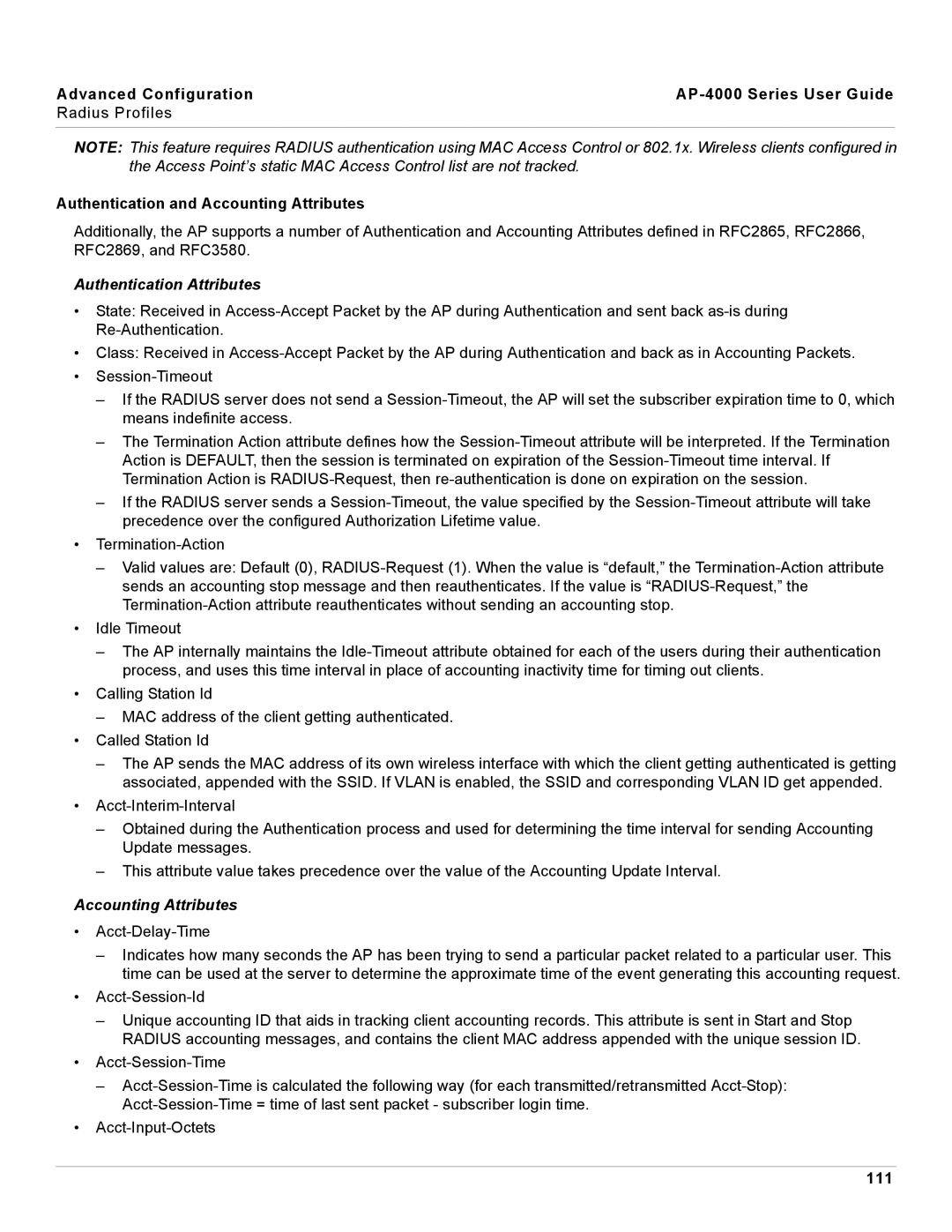Advanced Configuration |
|
Radius Profiles |
|
|
|
NOTE: This feature requires RADIUS authentication using MAC Access Control or 802.1x. Wireless clients configured in the Access Point’s static MAC Access Control list are not tracked.
Authentication and Accounting Attributes
Additionally, the AP supports a number of Authentication and Accounting Attributes defined in RFC2865, RFC2866, RFC2869, and RFC3580.
Authentication Attributes
•State: Received in
•Class: Received in
•
–If the RADIUS server does not send a
–The Termination Action attribute defines how the
–If the RADIUS server sends a
•
–Valid values are: Default (0),
•Idle Timeout
–The AP internally maintains the
•Calling Station Id
–MAC address of the client getting authenticated.
•Called Station Id
–The AP sends the MAC address of its own wireless interface with which the client getting authenticated is getting associated, appended with the SSID. If VLAN is enabled, the SSID and corresponding VLAN ID get appended.
•
–Obtained during the Authentication process and used for determining the time interval for sending Accounting Update messages.
–This attribute value takes precedence over the value of the Accounting Update Interval.
Accounting Attributes
•
–Indicates how many seconds the AP has been trying to send a particular packet related to a particular user. This time can be used at the server to determine the approximate time of the event generating this accounting request.
•
–Unique accounting ID that aids in tracking client accounting records. This attribute is sent in Start and Stop RADIUS accounting messages, and contains the client MAC address appended with the unique session ID.
•
–
•
